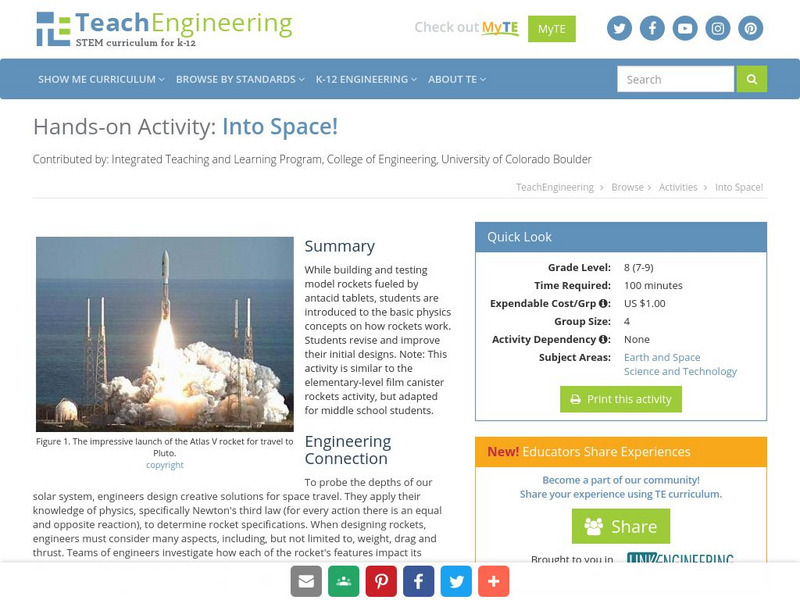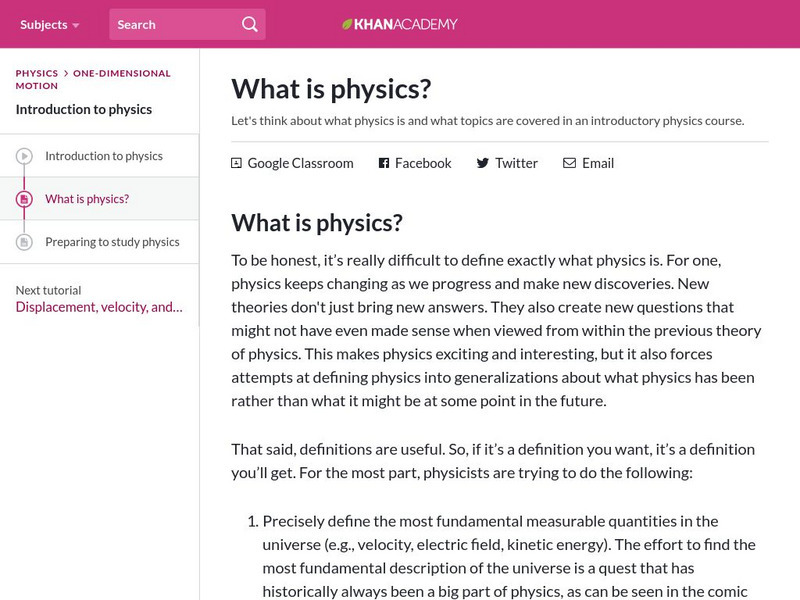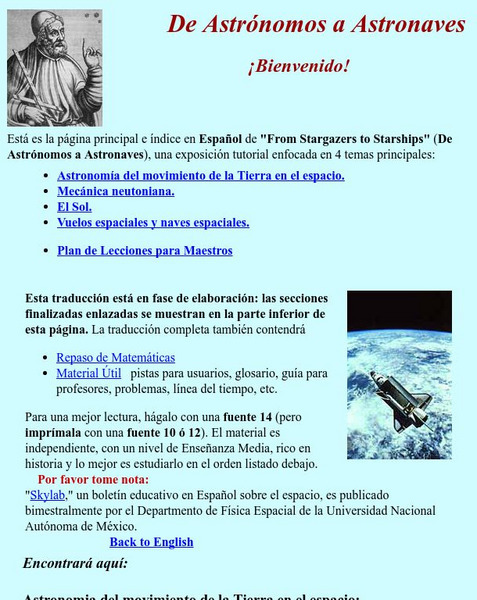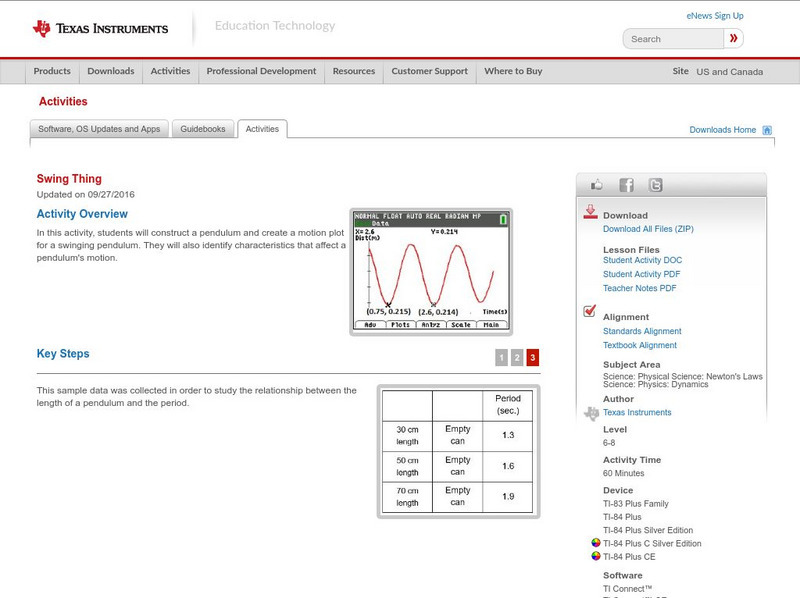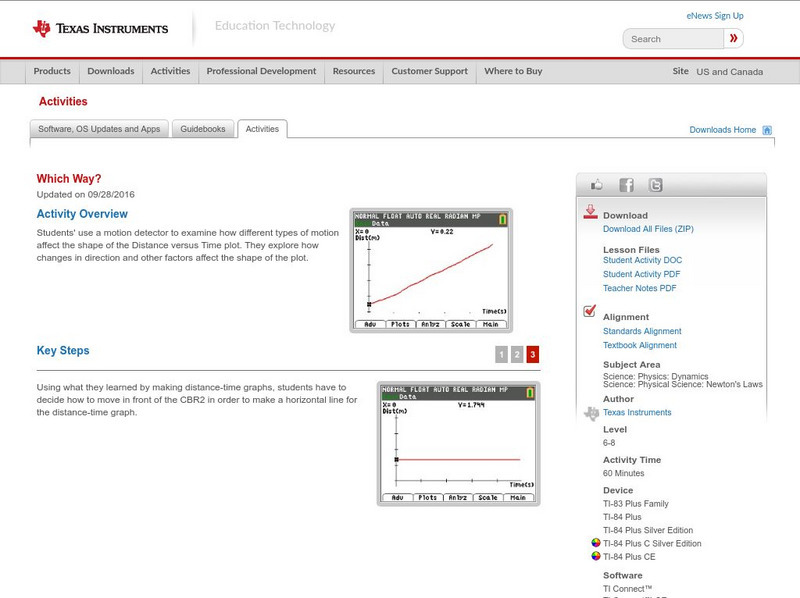Hi, what do you want to do?
University of Colorado
University of Colorado: Ph Et Interactive Simulations: Gravity Force Lab
Manipulate the mass and distance of two objects to see how these properties change the gravity force.
TeachEngineering
Teach Engineering: Sliding Textbooks
In this culminating activity of the unit which highlights how forces play a role in engineering design and material choices, students explore and apply their knowledge of forces, friction, acceleration, and gravity in a two-part experiment.
CK-12 Foundation
Ck 12 Exploration Series: Simulations: Physics: Bobsled
[Free Registration/Login Required] Learn about centripetal motion in the context of a bobsled on a track. Adjust variables to test how many ways the bobsled can stay on the track in a race with the simulation. Examine potential problems...
CK-12 Foundation
Ck 12: Torque
[Free Registration/Login may be required to access all resource tools.] In this online lesson students will learn about Torque and how to calculate Torque in various situations.
CK-12 Foundation
Ck 12 Exploration Series: Simulations: Physics: Ballistics Tests
[Free Registration/Login Required] Practice with the concepts of conservation of momentum and energy by analyzing a special case of the ballistic pendulum.
TeachEngineering
Teach Engineering: Into Space!
While building and testing model rockets fueled by antacid tablets, students are introduced to the basic physics concepts on how rockets work. Students revise and improve their initial designs. Note: This activity is similar to the...
Physics Classroom
The Physics Classroom: Determining the Net Force
Online classroom site explaining the concept of balanced and unbalanced forces. The site has examples and exercises for the student to review and try.
Khan Academy
Khan Academy: Start: How Do Computers Simulate the Motion of Virtual Particles?
In this lesson we'll explore how we use fairly simple physics to draw particles which move according to the forces we feel in the real world (such as wind & gravity).
CK-12 Foundation
Ck 12: Plix Series: Satellites, Shuttles, and Space Stations
[Free Registration/Login Required] Simulate the launch of a rocket to see how rocket propulsion works. After the activity, answer a challenge question to check for understanding.
Physics Classroom
The Physics Classroom: Momentum and Its Conservation: Explosions
As with collisions, this interactive physics tutorial shows students how momentum is conserved in explosions.
Physics Classroom
The Physics Classroom: Momentum and Its Conservation: Equations and Thinking
In this interactive physics tutorial, students will take a more qualitative approach to some collision problems. The questions provide a real test of conceptual understanding of momentum conservation in collisions.
Science Buddies
Science Buddies: Teaching Engineering Design With an Egg Drop
Middle schoolers build a device to protect an egg and prevent it from breaking when dropped.
OpenStax
Open Stax: Applications of Statics, Including Problem Solving Strategies
From a chapter on Statics and Torque in a Physics textbook. This section of the chapter discusses how statics can be applied in the real world, and strategies for solving statics problems. Includes a question, two exercises, and a...
Khan Academy
Khan Academy: What Is a Centripetal Force?
Learn what centripetal forces are and how to calculate them. Included are two problems with the solutions provided.
Physics Classroom
The Physics Classroom: Centripetal Force Requirement
Animation depicting the effect of a centripetal force on the motion of an object. Newton's laws are used to explain why circular motion requires an inward-directed force.
Khan Academy
Khan Academy: What Is Physics?
Article attempts to answer the question "what is Physics?" Takes a look at concepts such as force, motion, Newton's Laws, work, energy, and much more.
Other
Phy6: De Astronomos a Astronaves
This site contains four main categories: Astronomy of the Earth's motion in space, Newtonian mechanics, the sun and spaceflight and spacecraft.
Middle School Science
Middle School Science: Balloon Powered Race Cars
An idea developed by a physical science teacher who applied Newton's Laws of Motion in creating a balloon powered race car. Find simple objective, materials, rules, and procedures.
PBS
Pbs: Nova: Top Gun Over Moscow
An online exhibit investigating the sensations experienced by a cockpit pilot in a Russian aircraft. Focuses on G-forces and apparent weightlessness.
TeachEngineering
Teach Engineering: Destination Outer Space
Students acquire a basic understanding of the science and engineering of space travel as well as a brief history of space exploration. They learn about the scientists and engineers who made space travel possible and briefly examine some...
Texas Instruments
Texas Instruments: Swing Thing
In this activity, students will construct a pendulum and create a motion plot for a swinging pendulum. They will also identify characteristics that affect a pendulum's motion.
Texas Instruments
Texas Instruments: Match Me!
In this activity, students move in a specific way in front of the motion detector to create motion plots that match a given Distance versus Time plot. They make connections between types of movements and characteristics of Distance-Time...
CK-12 Foundation
Ck 12: Fifth Grade Science: Earth Science: Gravity
Do you know how gravity affects you? This module defines gravity and explains how gravity affects the motion of objects.
Texas Instruments
Texas Instruments: Which Way?
Students' use a motion detector to examine how different types of motion affect the shape of the distance versus time plot. They explore how changes in direction and other factors affect the shape of the plot.









